REPETITION AS MEDITATION ~*~
Hello!
I hope you are all well.
I’ve been very busy filming a new series of short video lessons titled, The Absolute Essentials Of Personal Training. This series will appear first on www.ptonthenet.com with a new lesson released every two weeks. I’ve constructed 25 lessons that begin with an overview of the series. I then give eight lessons each, focusing on the concepts of “I”, “WE”, and “ALL”.
Each lesson focuses on the four absolute essentials of each topic. I begin by sharing what I feel is essential for the individual trainer or healthcare professional to embrace as a living practice so that they can be authentic with their offerings at the “WE” and “ALL” levels of relationships. The lessons are all ten minutes or less, so as you can imagine, all I can do is make suggestions as to what skills and abilities, if developed, will provide the essential life skills for individual growth as the basis for progressively more complex “WE” and “ALL” relationships. I’m doing my best to highlight the undeniable interconnectedness of all beings and all life.
It is my dream that exercise and healthcare professionals will embrace their unique opportunity to truly help people in finding well-being by creating it within themselves first. Our whole exercise and healthcare community has become so steeped in theory as reality that we have lost sight of the essentials that truly make a difference in people’s lives. Hopefully this series will trigger some awakening in those who’s hearts are open to holistic living.
REPETITION AS MEDITATION
This morning, I thought I’d share a little on simple ways to meditate. The number of times I’ve had students and people in general tell me that they can’t meditate because their mind won’t hold still is too many to count. This is a byproduct of living in an information-based society where the intellectual mind commandeers the biological mind or soul and suppresses the development of the Awareness-soul. This problem is well exemplified by the number of children and adults with ADD, ADHD, anxiety and learning disorders today.
The word “meditation” shares a common root with the word “concentration”. To “con-centrate” means to move toward your center. Because the western culture is so externalized in the expression of self – which largely results from premature left-brain development in children, when such person meditates, their mind resists coming to rest. This occurs when one’s identity is based largely on what they think instead of who they actually are. For such people, their thoughts represent who they “think” they are. As one in such a state attempts to relax the mind, it often feels as though they are dying inside.
To exemplify this state of existence, consider all the people you know of that can’t relax unless a TV or radio is on. Such people generally feel very uncomfortable in silence and will typically begin fidgeting, start meaningless conversations, or, in some cases, create havoc with those around them without even realizing they are doing it. To the degree that one lives in this state, they can never truly come to know themselves. They have actually fallen into the trap of thinking that their thoughts are more real then they are!
MEDITATION TIPS
Stress Induced Rest:
When someone suffers from monkey-mind, I find it most helpful to fatigue their body before meditation. This grounds them in their body. When we fatigue the body, we also reduce the amount of sugar in the blood, which has the effect of dulling or calming the mind because the brain is a sugar-lover. Once the body is fatigued, it craves rest. If people are even too entrapped to relax their mind after 10-20 minutes of vigorous exercise, simply create a series of complex exercises such as kneeling on a Swiss ball, multi-directional lunges, or Kettle-Bell exercises. This will fatigue the mind quickly due to the high level of concentration and awareness needed to complete such exercises. I find it very helpful to create a circuit of 4-5 such exercises and when it is time for a rest period, instruct them to sit or lay down and allow their whole body to come to stillness or a state of deep rest. When people only have 1-3 minutes in which to deeply relax, I find the ego can be tricked into resting because it doesn’t “think” it can be exposed in such a short time. With each progressive set, most people go deeper and deeper into relaxation until suddenly, like a flash, they find themselves in a No-Mind state. Their reactions, even with a short 3:00 meditation can range from total awe, to tears, to fascination. For many, this is their first conscious date with stillness.
Chanting:
For thousands of years, monks have used chanting to enter into deep meditative states. The chants are generally very simple in construction, often containing only one word or sound. This works very well to induce a meditative state because the ego-mind loves complexity and prides itself on its ability to create and regurgitate complex words and topics; this is part of the disease created by our current model of schooling. Because the ego-mind loves complexity, it reacts the same way my students do when I start talking about a simple topic such as water; they typically think they know it all already and don’t pay attention, start texting, talking to the person next to them, or they get up and go outside the class room to return phone calls. Only when chatting with the ones that stayed present do they come to realize they completely missed out on learning many essential points about water. Then I have to answer a load of questions that they wouldn’t have had to ask if they stayed present, which usually drives the more developed students nuts.
An example of how to use simple words in repetition is the use of the word “RAM”, which is another word for God. Because the complexity-mind quickly convinces itself that “it knows this already”, it tends to disengage. Yet, because the individual must stay engaged in forming the words and being in time with the group or teacher, the majority of the ego lays down like a dog that is tired of chasing sticks. In as little as 5-10 minutes, people often find themselves entering a deep dream state, yet being very aware of it without defending against it; they are too busy chanting and staying with the group to jump into any other thought-juggling act.
I used this very technique during my recent zen In The Garden weekend. As we began chanting, there was the usual disharmony in the group, yet as each person relaxed their individuality and merged into the harmony of the group, a beautiful meditative state emerged. While in this state, I took them outside for our last function of the day, which was to create without thinking. The result was an incredible experience. I got to witness as all nine of us created the beautiful rock formation you see here with the group.
In the following three images, which Vidya took the next morning, you can see me out looking at the stacks and formations we’d built the day before. I was looking because we had very strong winds and rain that night. So strong in fact, I woke up several times during the night because I thought the wind was going to take the roof right off my patio. If you look at these photos, you will see that there are many small rocks in delicate formations all around the rock formation we created.
Much to my surprise, the entire formation was fully intact even after a real blast of wind and rain! You can see the intricate stack that also lasted through the night, which indicates that the person that built it was “centered” while building it and it too endured the storm. One of the most beautiful experiences of the weekend was building the group creation. While we were doing it, we were like bees in a hive. None of us ever seemed to get in the way of the others and it was as though we already knew the plan and the actions were intuitive. This shows how harmonizing a group can have excellent results for achieving any goal or objective. This is the function of the Huka dance used by the Maori (native New Zealanders) before battle, which you may have seen the New Zealand All Blacks rugby team do before a game.
Amazingly, many of my student’s emailed Vidya by Monday with their own stacks they were inspired to create with themselves, family and friends!
Repetitive Art:
In the final image, you can see a piece of art I created that I call “The Divine Well”. I often do this kind of simple art at the end of the day to calm my mind and induce a deep state of relaxation before bed.
When I start such art pieces, I generally have no idea of what will emerge on the page. I simply go by feel. I choose any color that feels good and begin drawing dots or lines. I simply put dots and lines wherever putting the pen down creates calmness within me. When it is time to switch colors or shapes, I get a sense of completion in me. I just go through that process until I naturally feel complete and centered. I have had very deep meditative experiences doing this kind of art and frequently use it when I’m on road trips and suffering from jet lag or the stress of dealing with so many people. Very helpful!
The key points with this kind of art meditation are:
1. Have no attachment to the outcome. How beautiful it is is irrelevant. Think of it like cleaning a baby diaper; you don’t worry about how beautiful it looks as you clean the babies bottom. You just want it done so the stink goes away (mental activity) and the baby (mind) is clean. To the degree that not judging your art is challenging for you, you need to do it more often!
2. Keep it simple. You don’t need to get into drawing faces, animals, or intricate architecture. You don’t even need a variety of colors. Some of my best meditative art came by way of a black pen while sitting on airplanes or in airports. Dots, squiggles, and basic shapes like circles, squares, diamond shapes and the like do well because they are relatively brainless creations.
3. Feel the art. Before you begin, just look at the paper in blank-state. Notice that it doesn’t influence your inner-sense of self. It’s blank. Then, as you put each mark on the paper, notice that something changes inside you. Each mark will have the effect of either inducing harmony or chaos within; chaos feels as though you are being distorted or pulled upon by the art. If you feel chaos emerging, move your pen in different shapes above the paper and with a little playing around, you will find that one of those shape-intentions draws you back toward your center – so do that. With a little practice, you will begin learning how to use healing art to balance yourself. What heals you will have a healing effect on anyone with similar imbalances. Though you may not think your art is pretty, you will be surprised to find that others will find themselves drawn to it. This is because at a subconscious level, they are being balanced and healed by it because they need some of the medicine you created for yourself!
By practicing any form of meditation that works for us, we begin to heal ourselves and become clear as to who we are. We then naturally become more authentic in our relationships because more and more of us is present. This is called “Being”. As I often tell my students, “To Love is to BE and to BE is to Love”. For more techniques, please listen to Dr. Quiet of my 4 Doctor Audio Companion audio series.
I will be resting through the weekend starting tomorrow, so if I don’t get a chance to write another blog before Monday, I’d LOVE to see some of your meditative art, be it pen, water color, stacking rocks or playing in the mud! Remember, if you create something that feels good to you, you have created medicine for any other with similar imbalances. If you email a photo of your creation(s) to [email protected], I’ll post as many of them as I can in an upcoming blog.
Love and chi,
Paul Chek

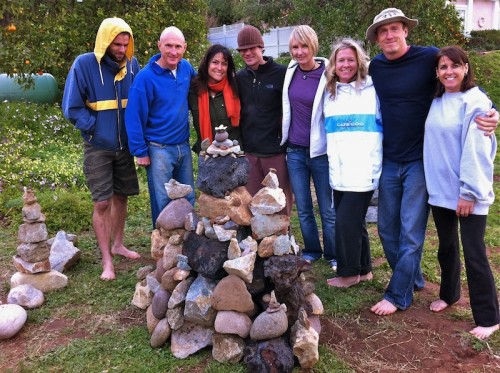
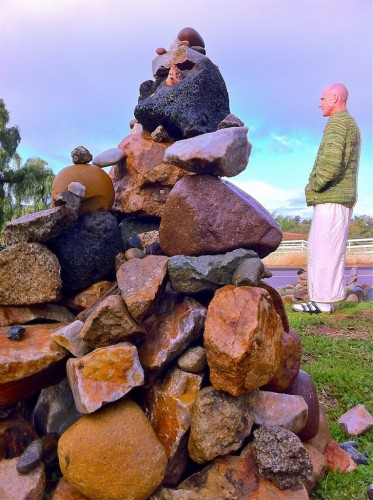
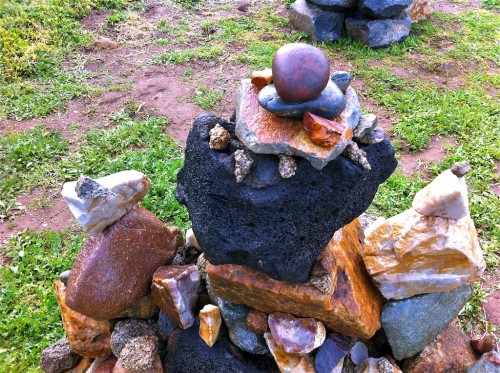
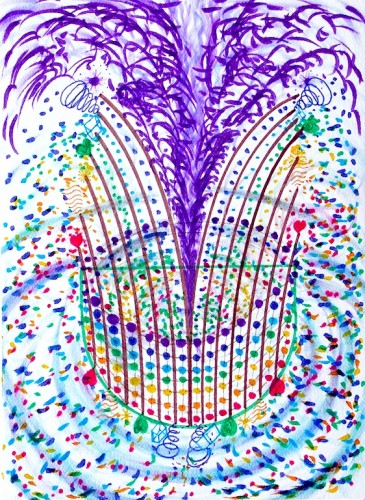

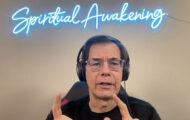
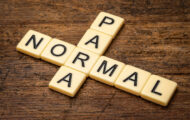










Find me on the web